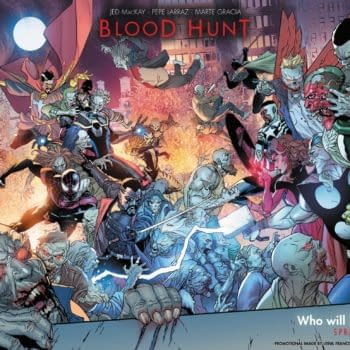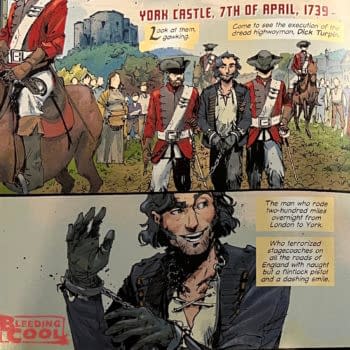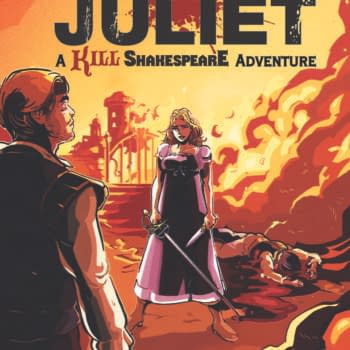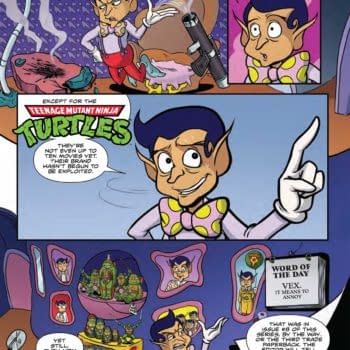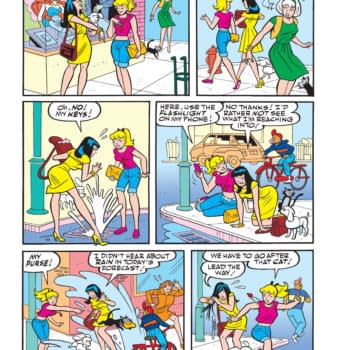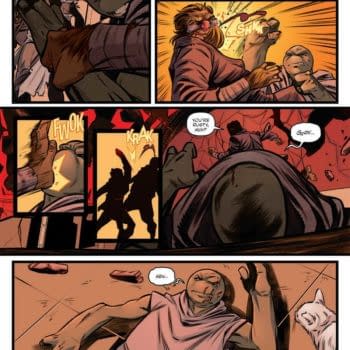Posted in: Comics, Look! It Moves! by Adi Tantimedh | Tagged: A Link To The Past, adi tantimedh, Comics, entertainment, manga, shotaro ishinomori, The Legend of Zelda, zelda
The Legend Of Zelda: A Link To The Past As An Introduction To Comics Master Shotaro Ishinomori – Look! It Moves! by Adi Tantimedh
Adi Tantimedh writes,
Viz Media has published the original manga adaptation of The Legend of Zelda: A Link to the Past that was originally serialised in Nintendo Power back in the 1990s. To me, the most notable thing about it is that it's written and drawn by Shotaro Ishonomori, one of the masters of comics and most influential creators after Osamu Tezuka.
I'd been meaning to write about Ishinomori for years. To many Western readers, the Legend of Zelda comic would have been their first and only exposure to his work, but in Japan, he's the pioneer of the Japanese superhero tradition known as Tokusatsu. He was considered a national treasure in Japan, and to have him adapt a Zelda game to comics was a huge deal.
Ishonomori's art style has a kid-friendly, cartoony look reminiscent of his mentor Tezuka's, but unlike Tezuka, who experimented restlessly with darker, more adult stories later in his career, Ishinomori largely stayed in the superhero genre. You can see in the Zelda comic the deceptively simple art and storytelling style to deliver action and emotion in the most direct, visceral way possible, designed to appeal to kids.
The best way to compare Ishinomori to American comics creators is if you were to imagine Stan Lee and Steve Ditko had been combined into one man. When you read his original comics, you'll find they have a lot of similarities to the superhero comics that Lee, Ditko and Kirby had been creating in the 1960s, and Ishinomori was creating his characters at the same time period, with no evidence that he had read the Marvel comics being published at the time.
Case in point: Ishinomori's heroes, like their US counterparts, had secret identities, superpowers usually conferred to them by Science, and – here are the crucial parts – were beset by doubt and existential angst for the first time in Japanese comics just like Stan Lee, Jack Kirby and Steve Ditko imbued their heroes with angst. They were also up against big villainous secret societies, which was the norm during the turmoil of the Sixties and the rise of the secret agent genre as established by the James Bond movies. Ishinomori created at least 25 series over his lifetime, but I'm just going to talk about his three most well-known, which are now available in English on Comixology. His first major series, Cyborg 009, featured a multicultural team of heroes, not all of them willingly transformed into cyborgs, who get together to save the world, with the main character beset by doubt as they pit themselves against the evil organisation Black Ghost.
Kikaider is about a play on the Pinocchio theme with its angst-ridden robot hero out to protect the daughter of the scientist who created him from evil robots sent by an secret society.
Kamen Rider ("Masked Rider") is about a young man forcibly turned into an armoured cyborg by the evil organisation SHOCKER to be part of their army to take over the world, but his original mind and conscience survived intact and he sets out to fight them the evil cyborgs they send out to wreck havoc. Along the way, more Kamen Riders are created and become heroes to fight against Shocker.
Every kid in Asia knows Kamen Rider, and to a lesser extent Kikaider and Cyborg 009. Kikaider and Kamen Rider were fondly-remembered live action shows in the early 70s, and Cyborg 009 never really went away, coming back with a new anime series every few years, with the most recent being a big budget anime movie directed by Kenji Kamiyama, director of the Ghost in the Shell anime series and Eden of the East, and yet another new anime series is launching this year. Kamen Rider never went way, with new heroes and live action shows coming every year. There are over 50 Kamen Riders now, which makes for a lot of toy sales and hundreds of episodes of TV. There have been numerous anime adaptations, manga revivals and live action version of Kikaider as well, with a new live action movie out this year.
I compare Ishonomori's art more to Ditko than to Kirby because like Ditko, his figures are all about action, speed and motion while Kirby's are more about raw power. The characters in his panels have a flow during action scenes to lead the eye towards a climax of a final punch, hit or kick. His heroes are teens or young adults with all the angst and self-doubt you'd expect at that age, but also reflecting the uncertainty and turmoil of the 1960s and 1970s as they struggle in a hostile world they didn't create. You can see that dynamic at work in the Legend of Zelda comic, and there he even injects hero Link with the doubt and angst that all of his heroes have, even ending the story on a bittersweet note.
Ishonomori died in 1998, but his influence is still felt in US pop culture. His mid-70s series Himitsu Sentai Goranger ("Secret Squadron Goranger") was the basis behind what eventually became The Might Morphing Power Rangers by the 1990s, so an entire generation of kids in the West grew up with their minds molded by yet another Ishonmori series without even knowing it.
The Legend of Zelda: A Link to the Past is out for sale in bookshops.
Cyborg 009, Kikaider, Kamen Raider and a few other Ishinomori works are available on Comixology.
Graceful typing at lookitmoves@gmail.com
Follow the official LOOK! IT MOVES! twitter feed at http://twitter.com/lookitmoves for thoughts and snark on media and pop culture, stuff for future columns and stuff I may never spend a whole column writing about.
Look! It Moves! © Adisakdi Tantimedh












